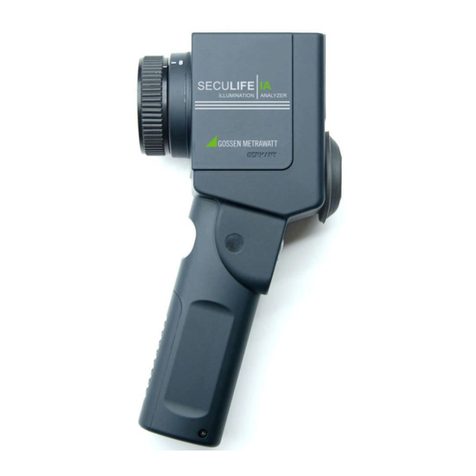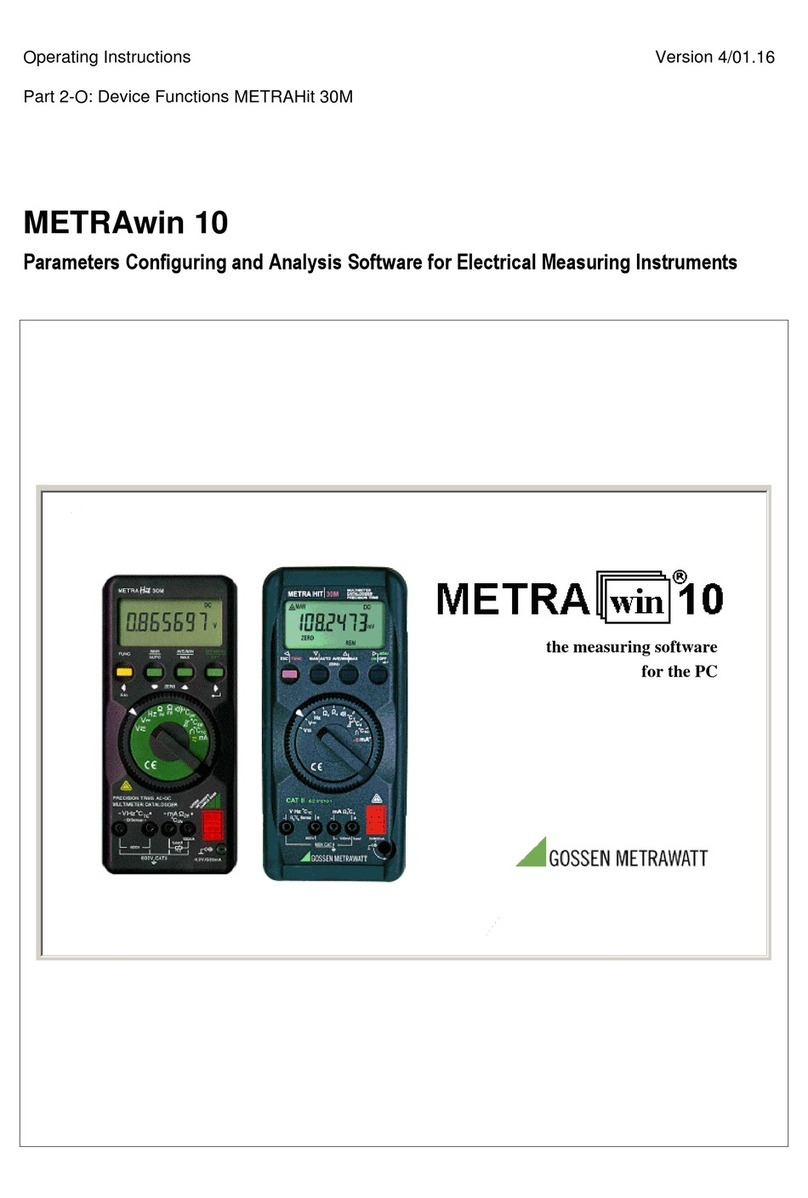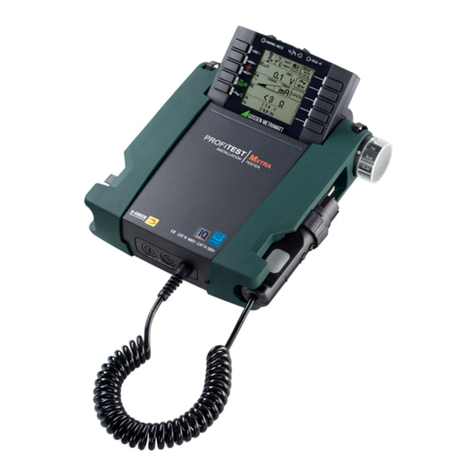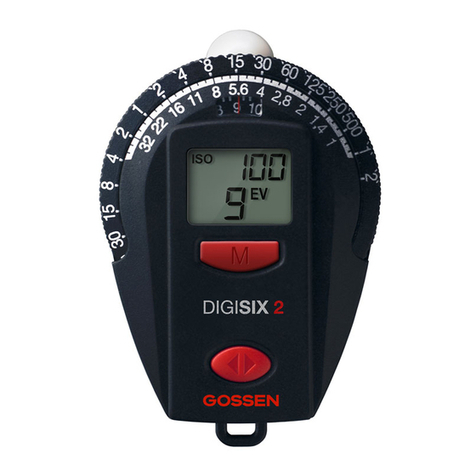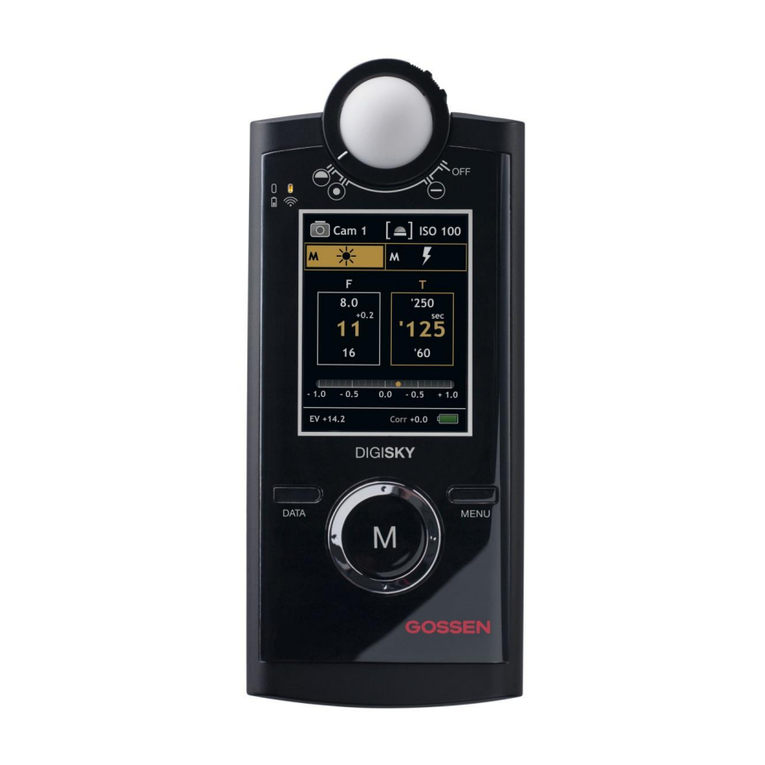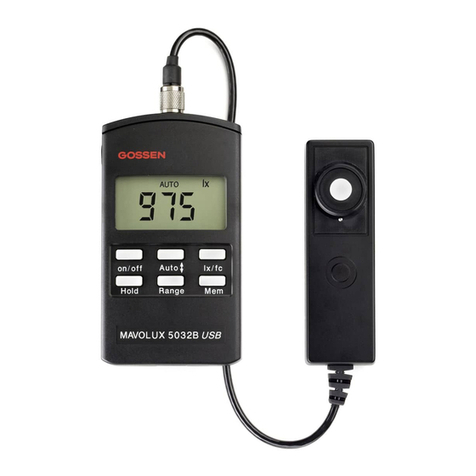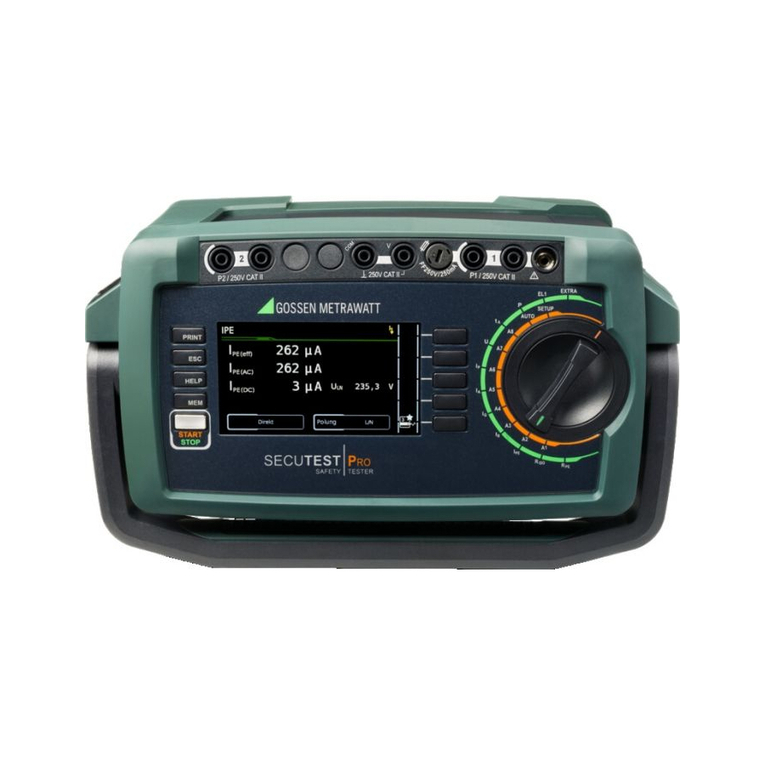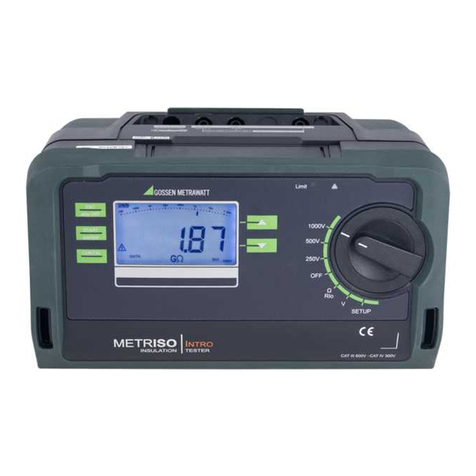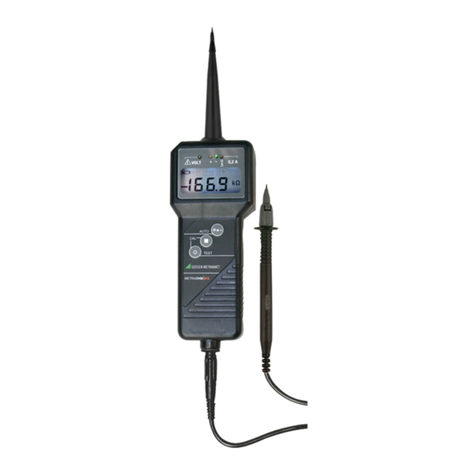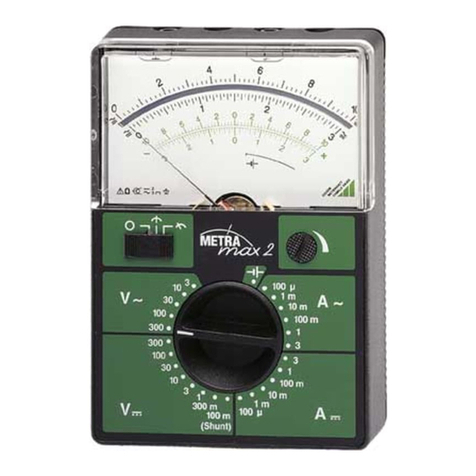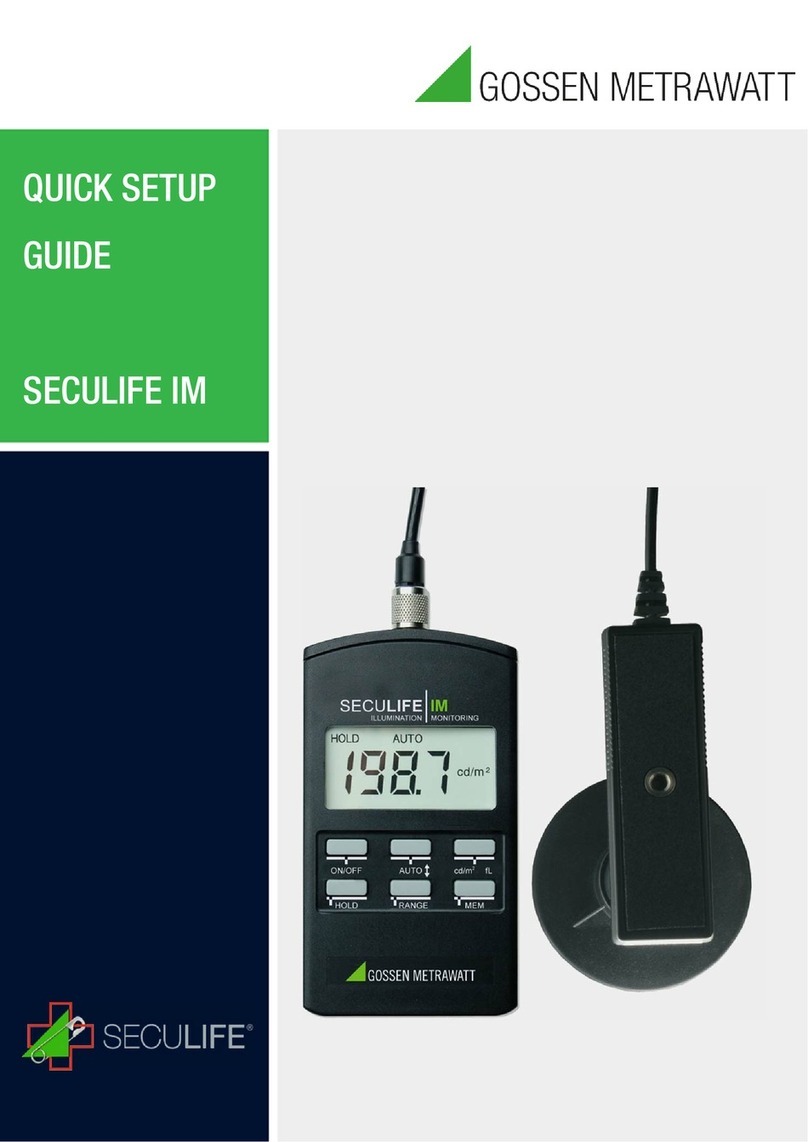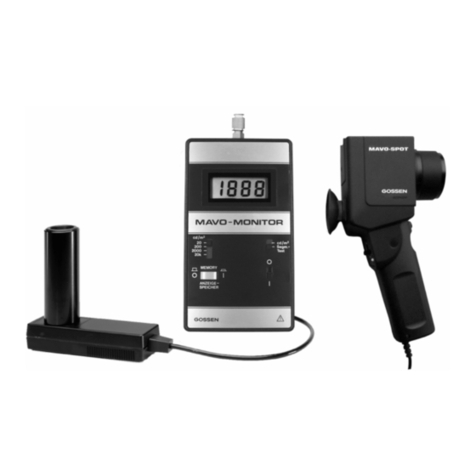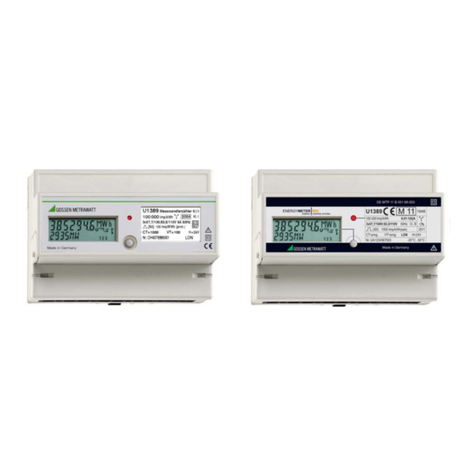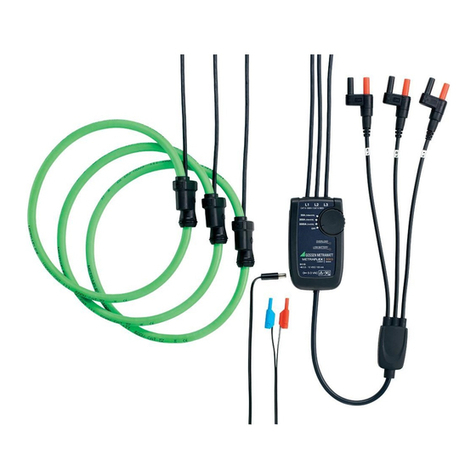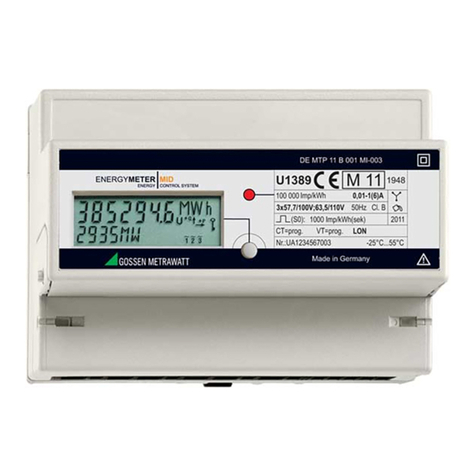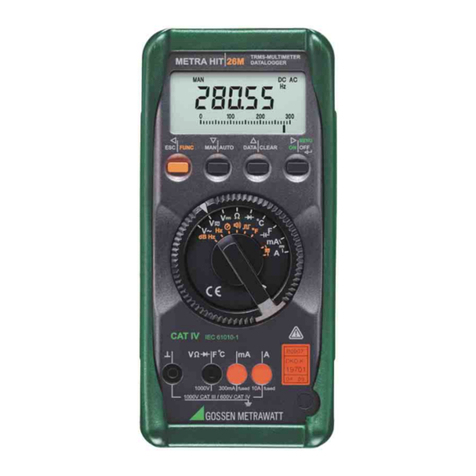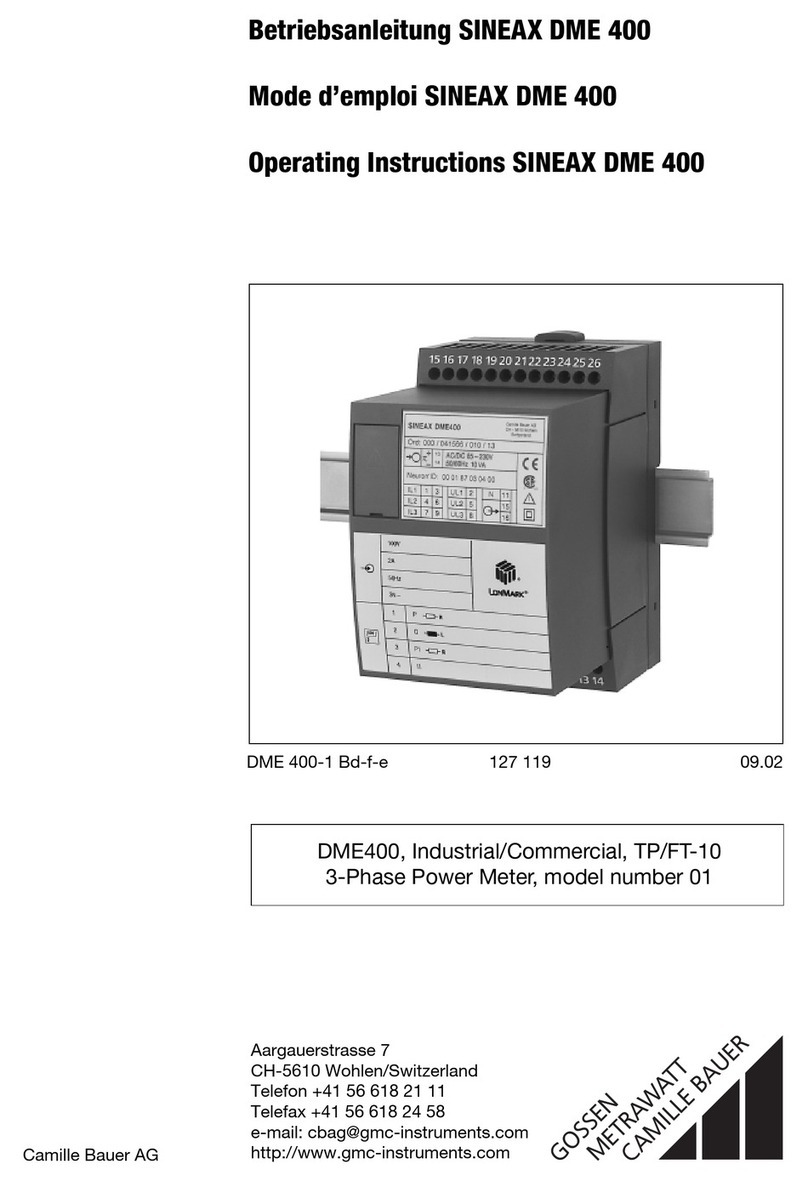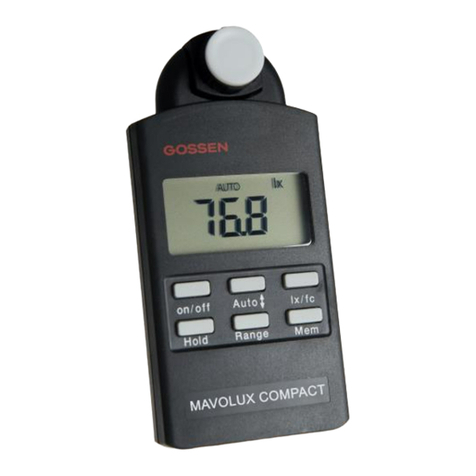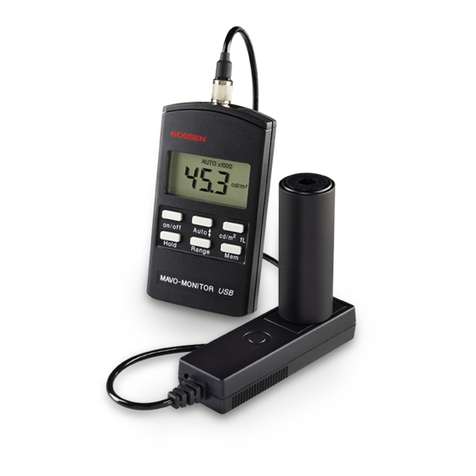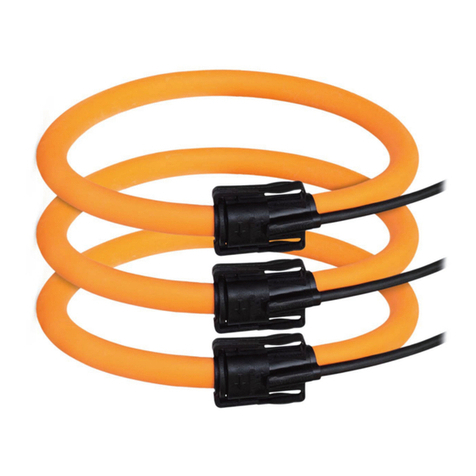
CLIMO FM
3
Table of contents
1Introduction ---------------------------------------------------------------------------- 5
1.1 General information --------------------------------------------------------------------------------5
1.2 Warnings----------------------------------------------------------------------------------------------5
1.3 Inserting battery cells into the instrument ----------------------------------------------------5
1.4 New battery cells or cells unused for a longer period -------------------------------------7
1.5 Power Supply via Supply Unit -------------------------------------------------------------------8
1.6 Periodic calibration ---------------------------------------------------------------------------------8
1.7 Service ------------------------------------------------------------------------------------------------8
1.8 Standards applied ----------------------------------------------------------------------------------9
2Instrument description ----------------------------------------------------------- 10
2.1 Instrument front panel --------------------------------------------------------------------------- 10
2.2 Instrument bottom -------------------------------------------------------------------------------- 11
2.3 Instrument input/output ports ------------------------------------------------------------------ 12
3Measurements----------------------------------------------------------------------- 13
3.1 Normal measuring mode (Measurements)------------------------------------------------- 13
3.1.1 Overview--------------------------------------------------------------------------------------- 13
3.1.2 Displaying all parameters------------------------------------------------------------------ 14
3.1.3 Hold function---------------------------------------------------------------------------------- 15
3.1.4 Min, Avg, Max, Cur values ---------------------------------------------------------------- 16
3.1.5 Displaying single parameter -------------------------------------------------------------- 17
3.1.6 Save function --------------------------------------------------------------------------------- 17
3.2 Logger mode (Measurements) ---------------------------------------------------------------- 17
3.2.1 Overview--------------------------------------------------------------------------------------- 17
3.2.2 Description ------------------------------------------------------------------------------------ 17
Entering logger mode ---------------------------------------------------------------------------- 17
Back to normal mode----------------------------------------------------------------------------- 18
3.3 Normal measuring mode (Sound) ------------------------------------------------------------ 19
3.4 Logger mode (Sound) --------------------------------------------------------------------------- 19
3.4.1 Overview--------------------------------------------------------------------------------------- 19
3.4.2 Description ------------------------------------------------------------------------------------ 19
Entering logger mode ---------------------------------------------------------------------------- 19
Back to normal mode----------------------------------------------------------------------------- 19
4Memory management------------------------------------------------------------- 20
4.1 Overview-------------------------------------------------------------------------------------------- 20
4.2 Saving measurement records ----------------------------------------------------------------- 20
4.2.1 Save menu ------------------------------------------------------------------------------------ 22
4.2.2 Rename menu-------------------------------------------------------------------------------- 22
4.3 Recalling normal/multipoint measurement results --------------------------------------- 23
4.3.1 Results recall menu ------------------------------------------------------------------------- 23
4.3.2 Results find menu --------------------------------------------------------------------------- 24
4.3.3 Results view menu -------------------------------------------------------------------------- 24
4.3.4 Clearing measurement records ---------------------------------------------------------- 24
4.4 Recalling logged measuring records -------------------------------------------------------- 25
4.4.1 Loggers recall menu ------------------------------------------------------------------------ 25
5Settings-------------------------------------------------------------------------------- 26
